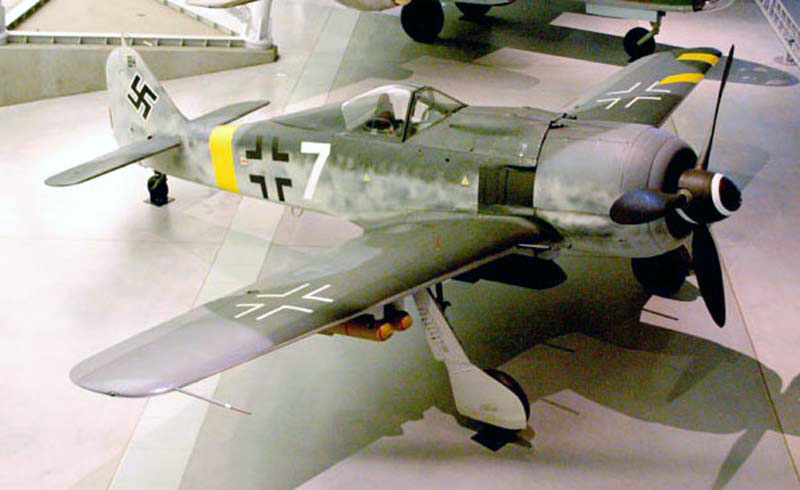|
AIRCRAFT |
|
|
|
|
|
|
|
|
|
Focke-Wulf
A 3 |
|
|
|
|
Focke-Wulf
A 4 |
|
|
|
|
Focke-Wulf
A 5 |
|
|
|
|
Focke-Wulf
A 6 |
|
|
|
|
Focke-Wulf
A 7 |
|
|
|
|
Focke-Wulf
A 16 |
1924 |
|
Light
transport
aircraft |
|
Focke-Wulf
A 17 Möwe (Gull) |
1927 |
|
8-passenger
airliner |
|
Focke-Wulf
A 20
Habicht (Hawk) |
1927 |
|
4-passenger
airliner,
. |
|
Focke-Wulf
A 21
Photomöwe |
1929 |
|
Aerial
photography
version
of A
17 |
|
Focke-Wulf
A 26 |
|
|
Engine
testbed |
|
Focke-Wulf
A 28 |
|
|
Re-engined
A 20 |
|
Focke-Wulf
A 29 |
1929 |
|
Production
version
of A
17 |
|
Focke-Wulf
A 32 Bussard (Buzzard)
|
1930 |
|
Airliner |
|
Focke-Wulf
A 33
Sperber (Sparrowhawk)
|
1930 |
|
3-passenger
airliner |
|
Focke-Wulf
A 36 Mastgans (Mast
Goose) |
1931. |
|
Mail
plane |
|
Focke-Wulf
A 38 Möwe (Gull) |
1931 |
|
10-passenger
airliner |
|
Focke-Wulf
F 19 Ente (Duck)
|
1927. |
|
Experimental
civil
utility
aircraft |
|
Focke-Wulf
GL
18 |
1926 |
|
Light
transport
aircraft
developed
from
the
A 16 |
|
Focke-Wulf
GL
22 |
1927 |
|
Revised
GL
18 |
|
Focke-Wulf
K 23 Buchfink (Chaffinch) |
1928 |
|
Two-seat
reconnaissance
aircraft |
|
Focke-Wulf
L
101
D Albatros |
|
|
|
|
Focke-Wulf
S 1 |
1925 |
|
Trainer |
|
Focke-Wulf
S 2 |
1928 |
|
Two-seat
trainer, |
|
Focke-Wulf
S 24
Kiebitz (Lapwing) |
1928 |
|
Sport
aircraf |
|
Focke-Wulf
S 39 |
|
|
|
|
Focke-Wulf
S 48 |
|
|
|
|
Focke-Wulf
W 4 |
1927 |
|
Reconnaissance floatplane |
|
Focke-Wulf
W 7 |
1932 |
|
Maritime
patrol biplane |
|
|
|
|
|
|
RLM
Designations |
|
|
|
|
Focke-Wulf
Fw
40 |
|
|
|
|
Focke-Wulf
Fw
42 |
1929 |
|
Proposed
twin-engined
medium
bomber
project
developed
from
the
F
19, |
|
Focke-Wulf
Fw
43 Falke (Falcon) |
|
|
Utility
aircraft;
known
internally
as A
43. |
|
Focke-Wulf
Fw
44 Stieglitz (Goldfinch) |
1932. |
|
Trainer
(biplane) |
|
Focke-Wulf
Fw
47 Höhengeier (Vulture)
|
|
|
Weather
aircraft;
known
internally
as A
47. |
|
Focke-Wulf
Fw
55 |
|
|
Biplane
floatplane |
|
Focke-Wulf
Fw
56
Stösser (Goshawk) |
1933 |
|
Advanced
trainer
(parasol
monoplane) |
|
Focke-Wulf
Fw
57 |
1935. |
|
Twin-engined
heavy
fighter-bomber
(prototype) |
|
Focke-Wulf
Fw
58 Weihe (Kite) |
1937 |
|
Transport/photo
reconnaissance/weather
research
aircraft |
|
Focke-Wulf
Fw
61 |
1936 |
|
Helicopter
(prototype) |
|
Focke-Wulf
Fw
62 |
1937 |
|
Ship-borne
reconnaissance
(biplane
seaplane) |
|
Focke-Wulf
Ta
152 |
1944 |
|
Interceptor/fighter
(derived
from
Fw
190), |
|
Focke-Wulf
Ta
154 Moskito (Mosquito)– |
1943 |
|
Night-fighter
with
wood
structure like
its
British
namesake |
|
Focke-Wulf
Fw
159 |
1935 |
|
Fighter
(prototype
only) |
|
Focke-Wulf
Fw
160 |
|
|
Proposed
design
for
a
four-engined
bomber
with
a
twin-boom,
unconnected
tail. |
|
Focke-Wulf
Ta
183 Huckebein |
1942 |
|
Proposed
design
for
a
jet-engined
fighter |
|
Focke-Wulf
Fw
186 |
1937 |
|
Autogiro
reconnaissance
aircraft
(prototype), |
|
Focke-Wulf
Fw
187
Falke (Falcon)
|
1936 |
|
Twin-engined
two-seat
heavy
day
fighter
("Zerstörer") |
|
Focke-Wulf
Fw
188 |
1939 |
|
Reconnaissance
aircraft
(prototype) |
|
Focke-Wulf
Fw
189 Uhu (Eagle
Owl) |
1938 |
|
Twin-engined,
three-seat
army
cooperation/tactical
reconnaissance |
|
Focke-Wulf
Fw
190 Würger (Shrike/butcher-bird)
|
1939 |
|
Single-seat
fighter/interceptor |
|
Focke-Wulf
Fw
191 |
1942. |
|
Twin-engine Bomber
B design
competitor
(prototype) |
|
Focke-Wulf
Fw
200 Condor |
1937. |
|
Four-engine
airliner
and
maritime
patrol-bomber |
|
Focke-Wulf
Fw
206 |
1940 |
|
Proposed
commercial
aircraft |
|
Focke-Wulf
Fw
238 |
|
|
Proposed
long-range
bomber
project
(RLM
airframe
number 8-238 already
used
by Blohm
und
Voss) |
|
Focke-Wulf
Fw
249 |
|
|
Proposed
large
transport
aircraft
project;
officially
designated
as
Project
195. |
|
Focke-Wulf
Fw
250 |
|
|
Proposed
twin-engine
jet
fighter
project |
|
Focke-Wulf
Fw
252 |
|
|
Proposed
single
engine
jet
fighter |
|
Focke-Wulf
Ta
254 |
|
|
Proposed
version
of
the
Ta
154
fighter. |
|
Focke-Wulf
Fw
259 |
|
|
Frontjäger (concept) |
|
Focke-Wulf
Fw
260 |
|
|
1960s
VTOL
airliner
proposal |
|
Focke-Wulf
Fw
261 |
|
|
Proposed
four-engine
bomber/reconnaissance/U-boat
support
aircraft
project |
|
Focke-Wulf
Ta
283 |
|
|
Proposed
interceptor
fighter
project |
|
Focke-Wulf
Fw
300 |
1941 |
|
Proposed
long-range
version
of
Fw
200 |
|
Focke-Wulf
Ta
400 |
1943 |
|
Amerikabomber design
competitor,
never
built,
|
|
Focke-Wulf
Fw
P.03.10206 |
1944 |
|
Series
of
long-range
strategic
bomber
projects |
|
Focke-Wulf
Fw
P.03.10221-15 |
1941 |
|
Large
capacity
strategic
transport |
|
Focke-Wulf
Fw
P.03.10025 |
|
|
A
1944
design
with
a
swept
wing,
a
forward-swept
V-tail,
and
two
pusher
propellers
at
the
rear |
|
Focke-Wulf
Fw
03.10251 |
|
|
Proposed
series
of
jet-engined
night
and
bad
weather
fighters |
|
Focke-Wulf
Fighter
Project
w/BMW803 |
|
|
A
1941
design
with
a
connected
twin-boom
tail,
slightly
swept-back
wings,
and
two
pusher
propellers
at
the
rear. |

